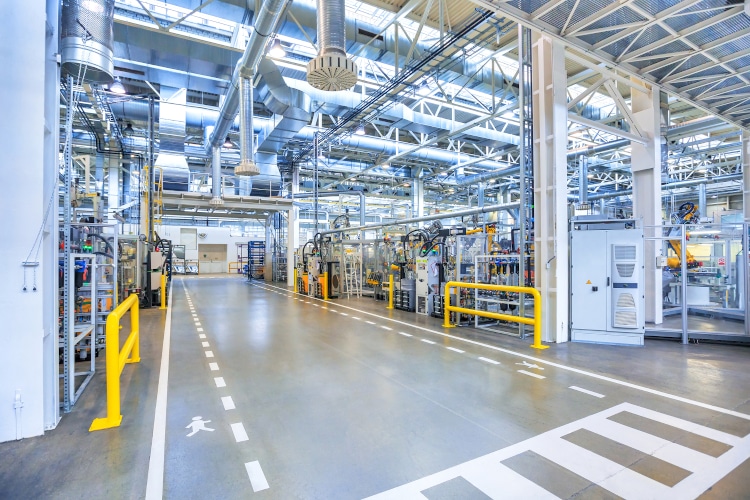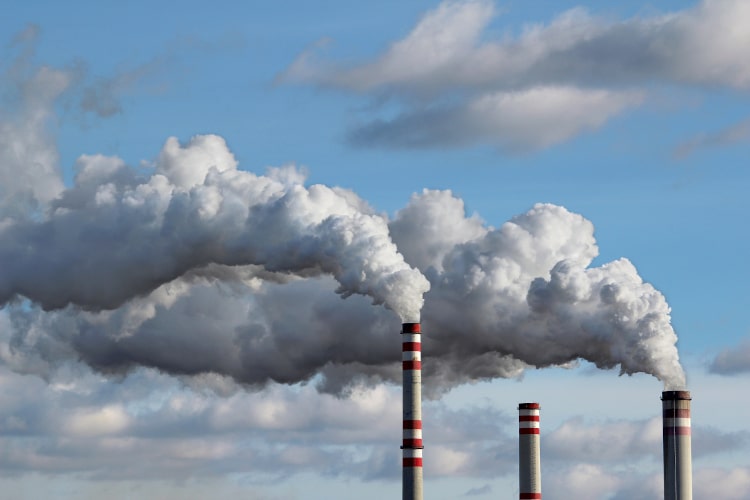
Photo: zhuzhu/Depositphotos (Not actual plant)
In the fight against climate change, every new tool and development are welcome additions. The latest breakthrough technology doesn’t prevent carbon emissions, but instead, pulls them straight from the air. A start-up named Heirloom Carbon Technologies has just opened the first commercial plant in the United States to use direct air capture, which absorbs greenhouse gases from the atmosphere.
To capture the carbon dioxide, the company uses limestone, one of the most abundant rocks on the planet. Since limestone forms when calcium oxide binds with carbon dioxide, Heirloom has found a way to use it like a sponge they can wring over and over. The plant heats up the limestone, pulling the carbon dioxide from it. Following this process, what’s left is a fine white powder—which is the calcium oxide. The team then places the powder in metal trays and exposes it to the open air, adds water, and waits for three days for it to turn back to limestone, restarting the cycle. The entire process is powered by renewable energy.
As for the carbon dioxide that has been pulled from the air, Heirloom has the gas permanently sealed by mixing it into concrete, where it can’t escape anymore. The company is also looking into burying the capture carbon dioxide into underground storage wells.
The plant, located in California’s Central Valley, is relatively small. Currently, it has the capacity to absorb a maximum of 1,000 tons of carbon dioxide per year, which is roughly equal to the exhaust from about 200 cars. The team is also still tweaking up the variables that could speed up the process and lower the costs. Yet the company expects to grow exponentially by replicating their simple model. “We want to get to millions of tons per year,” said Shashank Samala, the company’s chief executive. “That means copying and pasting this basic design over and over.”
“The science is clear: Cutting back carbon emissions through renewable energy alone won’t stop the damage from climate change,” said Energy Secretary Jennifer Granholm. “Direct air capture technology is a game-changing tool that gives us a shot at removing the carbon pollution that has been building in the atmosphere since the Industrial Revolution.”
Luckily, Heirloom and companies with similar approaches have been getting backing from multi-million dollar companies such as Microsoft, which has pledged to remove 315,000 tons of carbon dioxide from the atmosphere. After all, large companies see a more tangible way to fight climate change in direct air capture than in regular carbon offsets, which are sometimes hard to track. On the other hand, it’s an expensive technology, and some fear it could be used by gas and oil companies to prolong the use of fossil fuels. Heirloom has vouched not to accept backing from these industries.
While Heirloom and its technology have been seeing results, there is still a long way to go. Even so, their endeavor and the support they’ve been getting are steps in the right direction. Heirloom’s work seems particularly urgent in a landscape where traditional approaches, like planting trees and switching to clean energy, may no longer be enough to curb the damage done to our planet.
A start-up named Heirloom Carbon Technologies has just opened the first commercial plant in the United States to use direct air capture, which absorbs greenhouse gases from the atmosphere.

Photo: kodda/Depositphotos (Not actual plant)
To capture the carbon dioxide, the company uses limestone, as Heirloom has found a way to use it like a sponge they can wring over and over.
The United States officially has its first commercial Direct Air Capture facility!
Today we welcomed U.S. Secretary of @ENERGY, Jennifer M Granholm, and California Lieutenant Governor, Eleni Kounalakis, to unveil a facility in our home state of California where we’ll capture and… pic.twitter.com/3DRRfB9S9k
— Heirloom (@heirloomcarbon) November 10, 2023
Heirloom: Website | Twitter
h/t: [The New York Times]
Related Articles:
Striking Photos Document Lives of Indigenous People Most Impacted by Climate Change [Interview]
Patagonia’s Founder Gives Up Ownership of $3 Billion Company to Help Fight Climate Change
69 Experts Agree Climate Change and Political Conflicts Are Top Threats to Global Food Security
